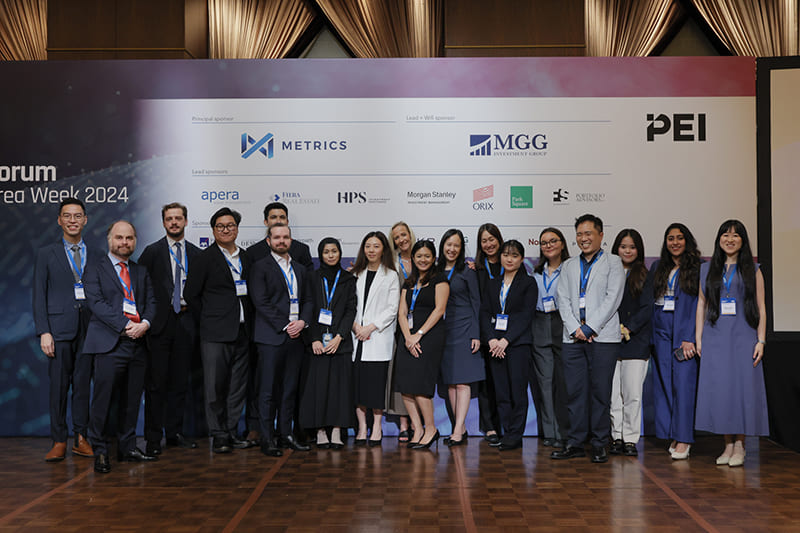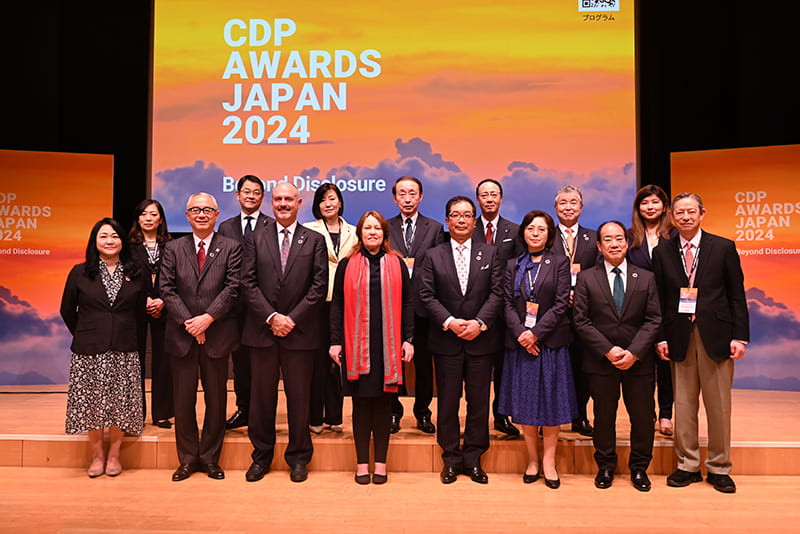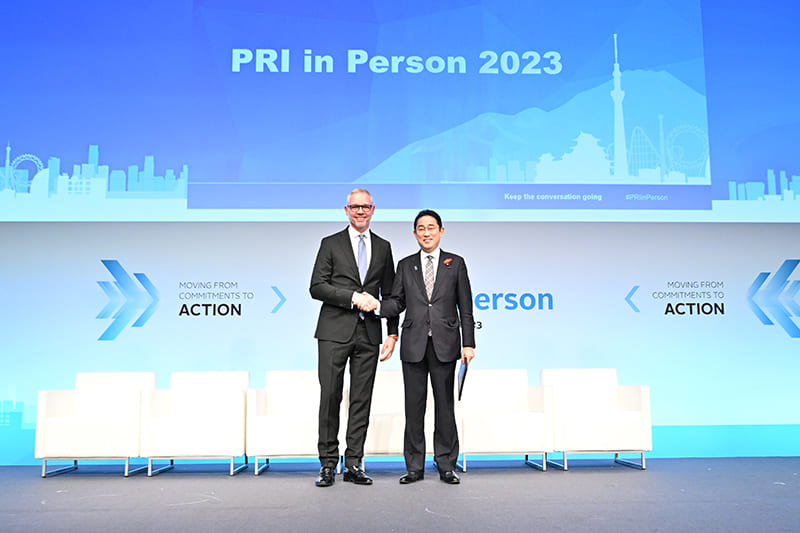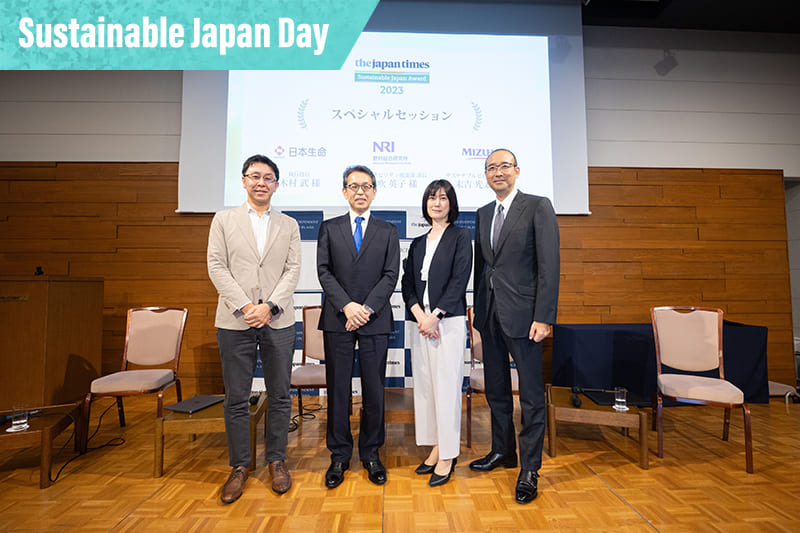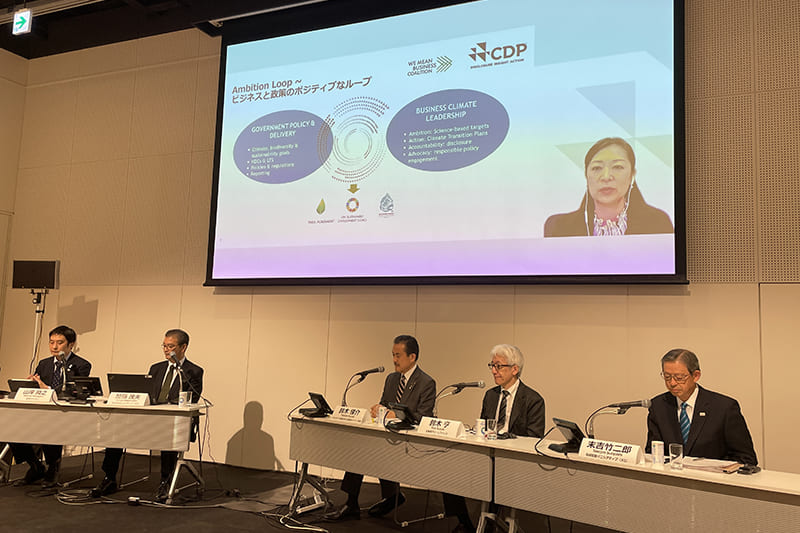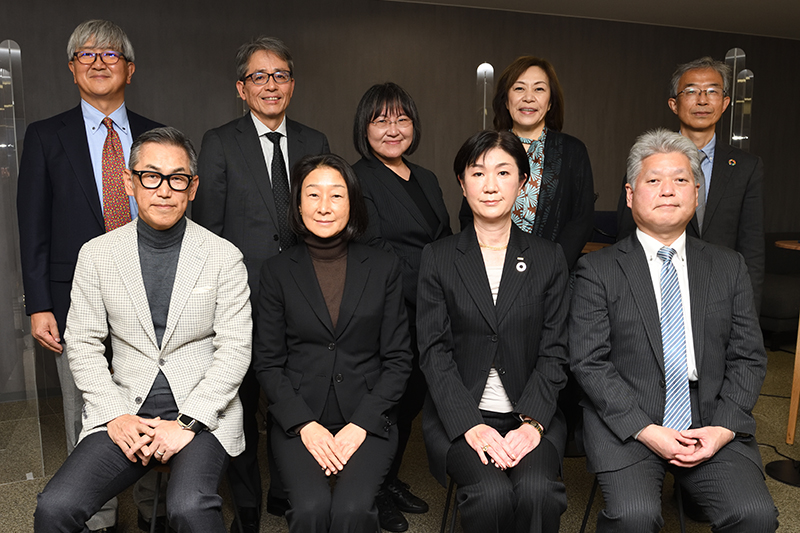July 05, 2024
Forum: Trends in private energy transition projects
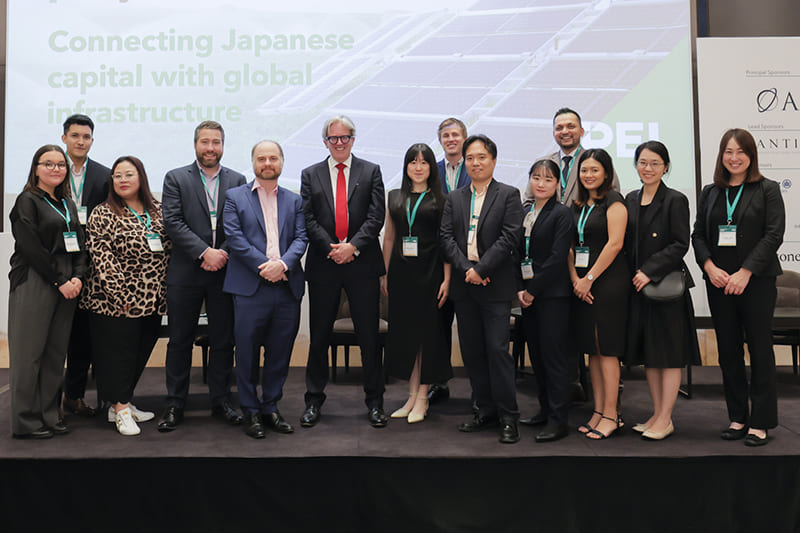
The 10th Infrastructure Investor Tokyo Forum on June 13 and 14 drew 500 experts wishing to catch up on recent trends in private projects, hailing from a broad range of countries including the U.S., the U.K., Australia, Singapore, France and Germany. Japanese accounted for a record 200 investors, according to the event’s host, information provider Private Equity International (PEI).
The event kicked off with a keynote presentation on Japanese regulations related to economic security and foreign investment. In his speech, “Infrastructure and Japan’s Foreign Investment Regime,” Ryusuke Bushimata, a director at the Finance Ministry’s International Bureau, explained what types of foreign investments are regulated, documentation that foreign investors need to submit, the flow of the ministry’s screening process and the Japanese industries that are protected from foreign investments due to national security.
Energy transition assets
Several discussions at the event focused on sustainability issues. One of them spotlighted business opportunities in the field of infrastructure for the energy transition, one of the most critical areas for corporate and government leaders to tackle if they are to achieve the goal of net-zero carbon emissions.
At a panel discussion under the topic “Seizing on the growth opportunities in the energy transition,” Maximilian Lindner, a partner at Antin Infrastructure Partners, spoke of two important topics they focus on when they explore opportunities for investing in transition-related assets: “avoiding technology risk” and “investing in platforms.” He said the private equity fund, based in London, Paris and New York, is investing mainly in Europe and North America but is cautious about possible disruptions caused by new technologies. He also said he focuses on platforms rather than particular technologies.
“We believe there’s generally better and higher value-creation potential from investing into platforms, and there’s also a higher degree of diversification and therefore downside protection against topics like policy changes,” he said.
Lindner said they apply five criteria when they invest in projects and companies: “an essential service,” “operations in a market with high entry barriers,” “high visibility of cash generation for the long term,” “the ability to pass through price increases” and “downside protection.”
Isabella Pacheco, director of climate infrastructure at BlackRock, said it sees potential in Asia because of government regulatory drives. For example, last year Japan pledged green transformation investments worth about ¥150 trillion ($1 trillion) over the next 10 years. But she also is looking for any impacts on Asian markets from regulations in Europe like the Carbon Border Adjustment Mechanism for applying fees to imported goods according to their carbon emissions. “So I think there’s a lot of top-down influences on the transition, but also changes happening from the corporate space as well,” she said.
Peter Schuemers, a partner and co-head of investment for Energy Infrastructure Partners, said the Zurich-based fund closely monitors impacts from regulations in all of the countries where it operates. He also said it focuses on asset diversification. “We’d like to diversify very broadly so that we are not dependent on one single technology where regulatory use might change again over time,” he said.
As for the United States, Don Dimitrievich, the senior managing director for energy infrastructure credit at the U.S. asset manager Nuveen, said the important point from the perspectives of policy and geopolitics is how to “de-emphasize reliance on countries like China for the infrastructure supply chain, which is viewed as critical energy security assets.”
For example, the Inflation Reduction Act of 2022 incentivizes clean energy supply chains in the United States, which will likely continue whether President Joe Biden, who steered it through Congress, or predecessor and climate denier Donald Trump wins the presidential election in November, he said.
However, some policies may change if Trump wins, Dimitrievich said, such as tax incentives for electric vehicles, renewable power generation and energy storage.
Balancing supply and demand
Asked about investment opportunities beyond the renewable energy sources currently in focus, like solar and wind, the investment specialists pointed to the importance of grid stability, since increasing such renewables will also increase supply fluctuations due to the intermittent natures of sunshine and wind.
One approach that could bridge this bottleneck in the short and medium terms is to invest in localizing solutions, Antin Infrastructure’s Lindner said, which involve local storage systems connected to local consumption through smart grids.
BlackRock’s Pacheco echoed that and said such grids are probably the most exciting area that the global giant investment management firm is looking at. She also emphasized the importance of batteries to support the grid.
Panelists also agreed that natural gas can be a transition fuel as a long-term option. “Gas is significantly better for the environment than coal, so I think we have to recognize that it is an important transition fuel and will be around for a while,” said Neil Doherty, the executive director in charge of net-zero strategy at IFM Investors. He noted that there is strong demand for natural gas in the U.S. because some manufacturing processes require higher temperatures than electricity can provide. The institutional investor and asset manager has invested in a project on renewable natural gas, in which methane is captured from organic waste.
Energy Infrastructure’s Schuemers said they think about capital allocation for the energy transition from a broad perspective. “We don’t only think about renewable energy. But actually, we’d like to invest into very diversified platforms,” he said. The energy infrastructure fund aims to diversify risks and invest in platforms to spread the risks across multiple technologies, he said, for example using wind or solar power to store energy in batteries or in the form of water pumped uphill, and then generate power as needed.
Schuemers said his company focuses on the platform approach for several reasons. By investing in multiple technologies, the portfolio becomes more effective in achieving its goal. Also, the complexity of platforms requires high expertise to do due diligence on the technologies involved, which offers an additional value advantage to the platform approach.
“What we’d like to do is partner with very large industrial companies or large energy companies” supplying energy for different countries, in order to create stronger purchasing power in the supply chain and attract better management teams and top-tier “off-takers” — those who pay for the service provided by a project — such as Amazon and Google, he said.
“So, there are multiple advantages, but it’s a more complicated investment approach, which requires a lot of sector expertise,” he said.
At the end of the panel discussion, asked by the moderator about the energy transition opportunities in Japan for foreign investors, BlackRock’s Pacheco said the investor giant is excited about the opportunities in Japan. “I think you have the backdrop of the GX (Japan’s green transformation policy). How that actually translates to equity or debt investments is still to be seen, but we’ve seen some very positive movements already,” she said, adding that areas such as hydrogen and offshore wind are showing positive signs.
In February, the government issued the first leg of its Japan Climate Transition Bonds as part of a framework through which it plans to issue a total of about ¥20 trillion in bonds over 10 years.
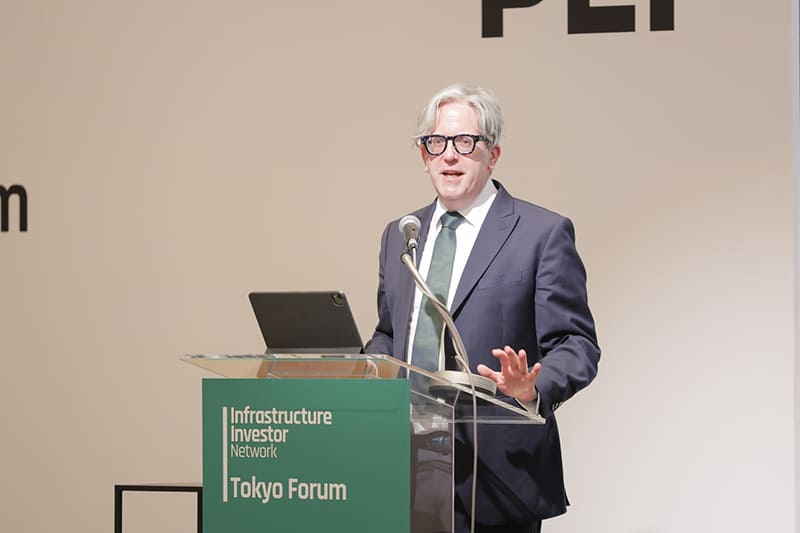
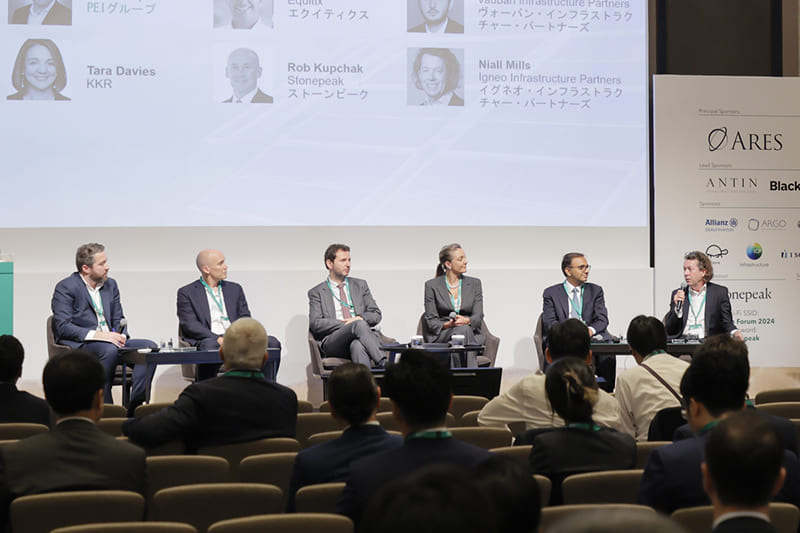
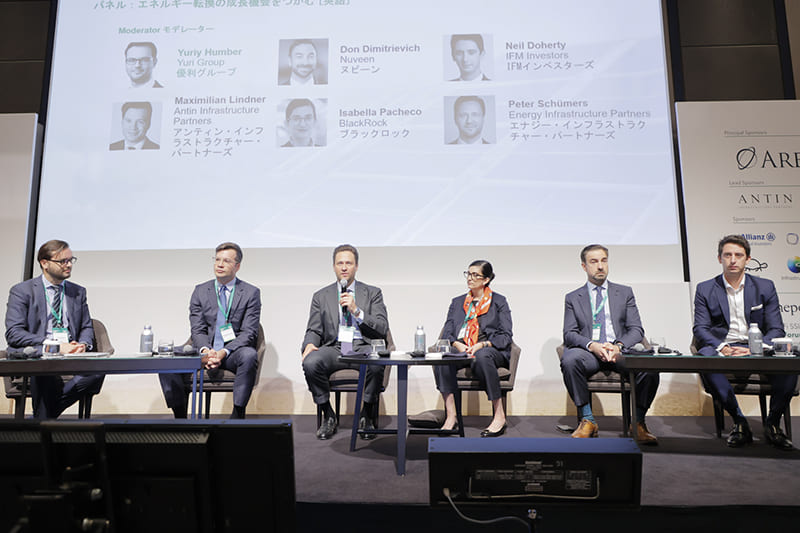
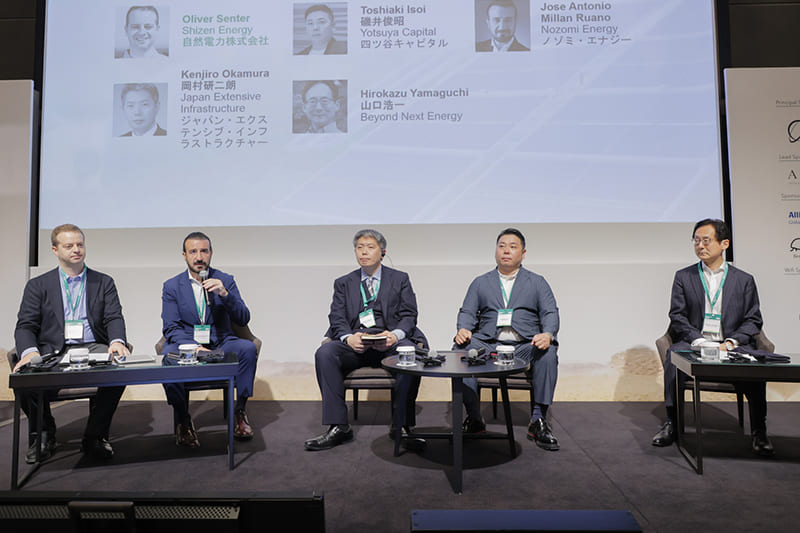
ESG investments
One of the panel discussions, “Investing in infrastructure through an ESG lens,” focused on what are good ESG (environmental, social and governance) investments for institutional investors who invest in infrastructure assets. In it, experts involved in consulting or asset management for infrastructure and real estate exchanged opinions and presented examples of good practices.
At the start, moderator Takaaki Hoshino, an executive officer and head of global fund investments for DBJ Asset Management, said there are two major issues facing Japanese infrastructure investors: what kinds of investments have a positive impact on ESG issues, and what good ESG reporting is.
Since the financial investment industry has already made much progress in terms of ESG issues, investors evaluate in one way or another how asset managers take ESG factors into account when they select infrastructure funds, said Wakako Taniguchi, an executive consultant at Russell Investments. Some investors evaluate funds by themselves, while others request consulting firms and others to evaluate funds for them.
“Based on our annual surveys for asset management firms, more than 90% of managers have already taken ESG into account in their investment process,” Taniguchi said. “Therefore, in portfolio management, ESG integration has shown pretty much progress.”
She also said that in many cases, Japanese investors see the energy transition, driven by the ESG investment trend, as an investment opportunity.
But once they start investing and enter the phase of regular reporting, they don’t receive full reporting of ESG-related data, which is possibly one of the reasons why it is slightly hard for Japanese investors to commit themselves to ESG issues, she added.
Rising sophistication
Tom Maher, a managing director at Patrizia, a global real estate investment manager headquartered in Augsburg, Germany, said investors’ level of sophistication has changed drastically compared to a few years ago, when investors had little interest in ESG data. “I think, as an industry, we collectively have responsibility to continue to foster” investors, he said.
As the market evolves and the level of the sophistication changes, investors’ perception of ESG has also transformed. Their past stance, in which they negative-screened companies, rejecting the poor performers, turned to one of gathering information in order to make a positive impact on society. And now they are going a step further and focusing on action and outcomes by using the data they gather, Maher said.
Philip Kent, the CEO of the specialist infrastructure and real asset manager Gravis, echoed that, saying: “I think for us, it’s really about embedding it (ESG) into our normal investment process. I don’t think there’s such a thing anymore as an ESG manager. I think if you’re an asset manager, you have to consider ESG as part of it.”
Since one aspect of ESG is decarbonization, it involves investment opportunities and risk management, he said, adding that ESG assessments and reports are “absolutely critical” in the due diligence process.
As for ESG-related reporting to institutional investors, panelists said they have a number of issues to overcome.
“In terms of reporting, the most objective one is the carbon emissions, and we are struggling” to get good information, said Jean-Pascal Asseman, the head of infrastructure and a partner at Axa IM Prime, part of the global Axa Group of insurance and asset management companies. The problem often comes from a lack of regular disclosures on carbon emissions and different regulations in different regions, he said.
“I think data and data quality is always a challenge. And I think the standardization is what we need to get towards,” Kent at Gravis said, adding that the classification of funds under the EU’s Sustainable Finance Disclosure Regulation is helpful for investors.
“I think getting data right, getting it consistent and getting it to mean the same thing is a real challenge,” he said.
Chengchen Qian, the senior project manager for sustainable infrastructure at the Global Infrastructure Basel Foundation (GIB), emphasized the importance of data. “When it comes to investment decisions, data is really the key,” he said.
However, ESG-related data is still fragmented, incomplete and noncomparable, although its quality has improved over the past few years, he said. On top of these problems, investors need to check different regional disclosure standards as well as voluntary ones. This all prompted global organizations, including the International Finance Corp. and the Organisation for Economic Co-operation and Development (OECD), to launch an initiative called the FAST-Infra Label in 2020 to accelerate the sustainable transition, he said. FAST means Finance to Accelerate the Sustainable Transition, and GIB is part of its secretariat.
At the end of the panel discussion, asked by the moderator for advice on avoiding the label of “greenwashing,” Qian said the key is to disclose reliable information. “The disclosure or transparency is one thing, and the accountability of the information that is disclosed is another thing.”
Renewable energy
Another session featured one of the hottest issues in Japanese infrastructure investments under the topic “Japan’s domestic renewable energy investing challenge — where is the deal flow?”
Since the world has a target of net-zero carbon emissions and the key to that is renewable energy, investors are looking for opportunities in clean energy. But there are also challenges in doing so.
Asked to provide an overview of investment opportunities in the Japanese renewable energy market, Jose Antonio Millan Ruano, the CEO of Nozomi Energy, said he focuses on three business topics: virtual power plants, which integrate scattered small power sources; battery energy storage systems (BESSes); and corporate power purchase agreements. “They are amazing opportunities for investors in Japan,” he said.
The Japan-focused renewable energy investor and developer in sustainable infrastructure was selected in May as one of the winning companies in Japan’s first auction on long-term power sources for decarbonization, securing two projects for battery energy storage systems, each with an initial installed capacity of 200 megawatt-hours.
With its coal-fired power plants aging and most of its nuclear power plants remaining offline, Japan launched the auction to expand the national capacity for stable supplies of zero-emission power by supporting new investments in renewables and storage batteries.
“The long-term decarbonization auction will be providing to us IPPs (independent power producers) and developers the chance to scale the BESS system in a remarkable way,” the CEO said.
To reduce carbon emissions, transitioning away from fossil fuels is essential. But one of the biggest problems with renewable energy is achieving a balance between supply and demand when variable power sources like solar panels and wind turbines regularly fall short of demand or outstrip it.
As one solution, experts are focusing on renewable power whose excess output can be stored in battery farms, supported by virtual power plants and related technologies, and financed partly using power purchase agreements with companies that find themselves increasingly urged to achieve net-zero emissions.
Behind the global trend toward renewables is the adoption in 2015 of the Paris Agreement, which requires signatories to set up long-term goals to reduce greenhouse gas emissions in order to keep the Earth from warming no more than 1.5 degrees Celsius above the levels during the Industrial Revolution. The sustainable development goals adopted at the United Nations in the same year also contribute to the trend. In Japan, then-Prime Minister Yoshihide Suga set a goal in 2020 for net-zero carbon emissions by 2050.
Kenjiro Okamura, the CEO of Japan Extensive Infrastructure, said corporate power purchase agreements and battery farms are areas that the investment fund is paying much attention to.
He noted that the demand for renewable energy and related infrastructure is expected to surge, and said that is why he launched the firm in July last year. Demand has been on the rise since late last year and is projected to continue climbing due to the increasing use of digital services, which jumped after the coronavirus outbreak and is rising further as the advent of generative AI requires more data centers, he said. “I expect the market to transform largely, since the country has to facilitate new power sources,” he said.
Finding land and lines
As a renewable energy developer focusing on corporate purchase, Yotsuya Capital founder and CEO Toshiaki Isoi said a key opportunity for his company is securing the land and connections for solar farms amid a scarcity of both land and projects. “It’s basically securing the land. It’s really tough. However, we do see the opportunity of securing such good projects if we are able to move in a systematic and fast manner by speeding up our due diligence process and making quick decisions,” he said.
Regarding the projection of stronger demand for renewable power in the future, discussion moderator Oliver Senter, the executive officer for investment and finance at Shizen Energy, asked the panelists about the existing power grid in Japan: “One of the questions here is a lot of focus on building renewable energy assets, but can the current grid infrastructure support that?”
He said that since privately financed transmission assets in Japan are few in number so far, more private developers want to develop energy projects and the government is promoting a huge subsea transmission line from Hokkaido. “Certainly, great investment opportunities are going to be one of the trends that we expect coming forward in Japan,” he added.
Despite the high potential for corporate power purchase agreements, the market has been growing only slowly due to several reasons, said Hirokazu Yamaguchi, the CEO of Beyond Next Energy. One of the largest is potential buyers’ hesitancy to set long-term contracts that could push up their total electricity costs, especially since spot prices for electricity are being predicted to decline in the long term.
Yamaguchi also noted that corporate purchasers tend to make contracts with standard utilities rather than developers because it is more “comfortable” to do so.
The history of corporate power purchase agreements in Japan is not long. The first one started in 2021 when the developer Clean Energy Connect, founded by Yamaguchi, reached a 20-year contract to build 22 solar farms exclusively for Dai-ichi Life Insurance and send the electricity to the insurers’ buildings through the retail electricity supplier Orix Corp. The first power purchase agreement for a virtual power plant was launched the next year when the developer made a contract with Amazon, he said.
The panel discussion also covered such topics as the co-location of battery farms and renewable energy power plants, plus the challenges of a new business approach, called “24/7 carbon-free energy,” under which electricity consumption overall involves no net carbon emissions and which was adopted by Google and other firms in recent years and has been gaining strong attention since then.
“In any case, storage will be very, very important from now on,” said Yamaguchi of Beyond Next Energy.
Aiming to highlight issues related to a sustainable society, The Japan Times gave its support to this event by becoming a media sponsor

